Content
A good variety of potatoes should be delicious, productive, resistant to diseases and pests and not very late. The Queen Anna potato fully meets all these requirements, which is probably why the variety is increasingly found in domestic gardens and dachas. The Germans bred Queen Anne, and specially adapted the variety to unfavorable conditions and difficult climate, making it as productive and resilient as possible - all this is excellent for Russian gardeners.
Description of potatoes Koroleva Anna varieties, characteristics and reviews about this potato can be found in this article. Here are brief recommendations for growing and caring for the crop.
Description
The bushes of this potato are not too tall, their stems are powerful, the leaves are large, with a little fluff. Potatoes bloom with large white flowers. The fruits are oblong, large, with yellow skin and creamy pulp.
Detailed characteristics of the Queen Anna variety:
- the ripening period is 80-85 days, which makes it possible to classify potatoes as mid-season varieties;
- the yield is extremely high - up to 450 centners per hectare of land;
- the weight of each tuber is, on average, 90 grams;
- average starch content - about 14%;
- the marketability of potatoes is estimated at 94%, that is, the tubers are excellent for sale;
- good keeping quality allows you to store the crop until spring;
- the number of potatoes in a bush is from 6 to 16;
- the taste of the tubers is good, the potatoes do not become overcooked, do not darken during cooking, and are most suitable for frying and preparing salads;
- the variety is immune to potato canker, scab, viruses, and is moderately resistant to late blight;
- Anna is suitable for growing on almost any soil and in any corner of Russia.
As you can see, the Queen Anna variety has many strengths, including:
- high productivity;
- excellent taste;
- good germination of planting material;
- friendly tying of tubers;
- resistance to pests and diseases;
- long shelf life;
- suitability for transportation;
- high content of microelements and vitamins.
How to grow the Queen Anna potato variety
The most important thing a gardener must do is to plant potatoes correctly in order to subsequently get a good harvest. In most parts of the country, it is customary to plant tubers in the ground in early May. By this time the soil will warm up well and dry out.
In different regions of the country, suitable conditions for planting potatoes are created at different times. On average, we can say that the best time for planting potato tubers is the third ten days of April - the first half of May.
Planting potatoes
Queen Anne potatoes prefer well-lit areas.There should be no stagnant water on the site; it is better if this place is protected from strong winds. The soil is preferably loose, well-permeable, and sufficiently nutritious.
If the composition of the soil does not meet these requirements, it can be improved. To do this, fertilizers, wood ash, peat, coarse river sand or lime are added to the ground.
Before planting, the tubers are sorted out: medium-sized potatoes, regular in shape, without damage or rot, are most suitable as planting material. Then potatoes need to be heated, for this, the seeds are brought into the house or into another heated room. When the tubers sprout, they are slightly greened – kept in direct sunlight.
Immediately before planting, potatoes of the Anna variety can be treated with a growth stimulator - this will further increase the yield.
A step-by-step description of the process of planting potatoes looks like this:
- In the fall, the area for potatoes is dug up or plowed. Before this, you need to scatter rotted manure or compost on the ground. In spring, the soil is additionally fertilized with nitrogen fertilizers.
- Now you need to dig holes or make planting furrows. At the same time, it is important to leave at least 40 cm between planting places, because the Koroleva Anna variety is large-fruited and prolific - there should be enough space for the potatoes.
- Place no more than one potato in each hole, otherwise too many tubers will form - they will not have enough space for normal development, which will result in the potatoes becoming smaller.
- Immediately after planting, before the soil dries out and becomes weathered, the holes are buried.
- It is recommended to mulch the potato plantings with peat on top. The thickness of the peat layer should be 2-3 cm.
How to care for German potato plantings
Only competent and regular care can ensure a decent potato harvest. The Queen Anna potato variety is unpretentious, but the plantings still require minimal care.
So, All care for potato beds consists of the following:
- During the tuber setting period, potatoes must water regularly and abundantly. The active formation phase of potatoes begins simultaneously with the flowering period of the bushes. It is at this time that potato plantings are watered at least once a week. It is better to use spray watering so as not to wash out the roots and tubers.
- If there are potatoes on the bushes pick all the flowers in time, this will significantly increase the size and quality of the tubers - the potatoes will develop better and faster.
- The roots of the German Anna variety potatoes are close to the surface of the earth, so bushes need to be hilled. Earth mounds will prevent the roots from drying out and sunburn. You need to hill up the potatoes carefully.
- Oxygen is very important for the development of the Queen Anna variety, so you need to regularly weed the beds, loosen the soil and remove weeds. This will help air and water to freely penetrate under the bush.
- Three times per season, the Queen Anna variety is needed fertilize. Fertilizers are applied during the period of growth of green mass, during the formation of flower buds and at the stage of active flowering.If you correctly use mineral complexes or organic fertilizers, you can significantly increase the yield of potatoes and the size of tubers.
- Bushes should be inspected regularly to identify disease or pest damage at an early stage. In such cases, emergency measures are taken: spraying potatoes and collecting insects.
Despite early ripening time, Queen Anna potatoes keep well. Only for this you need to provide suitable conditions: constant low temperature and humidity at 60-70%.
Reviews
Conclusion
Potatoes of German selection were created specifically for growing in the middle zone. Queen Anne can grow on almost any soil, but the most suitable for it are black soils, loams and sandstones, which allow air and moisture to pass through well. There is practically no need to care for the bushes.
All that is required from the gardener is timely watering during the flowering period, removing inflorescences, and pest control. In return, Anna will reward the owner with a bountiful harvest of large and very tasty tubers.
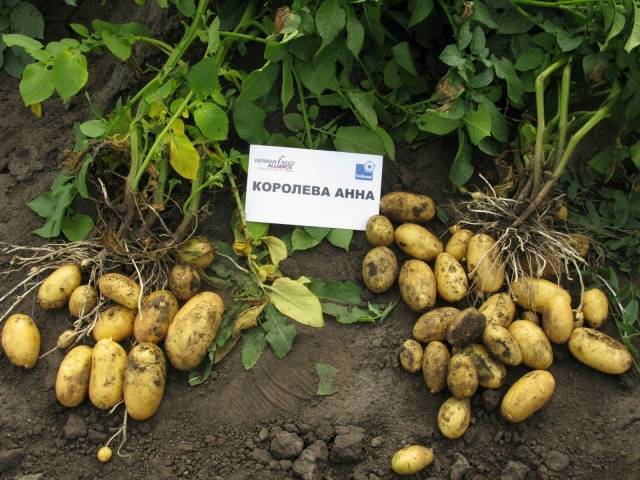
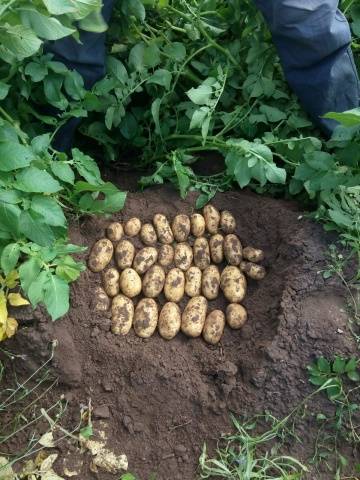
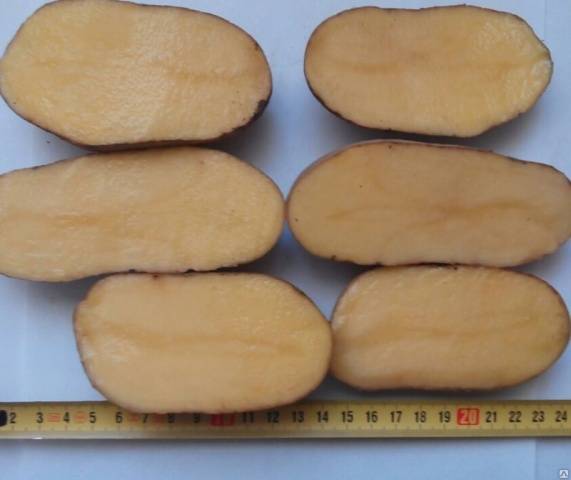
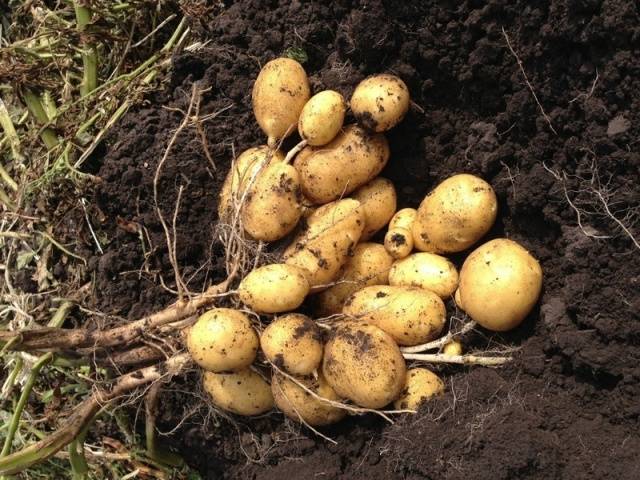
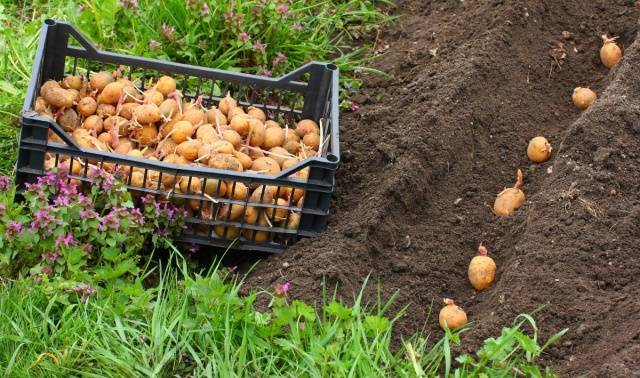
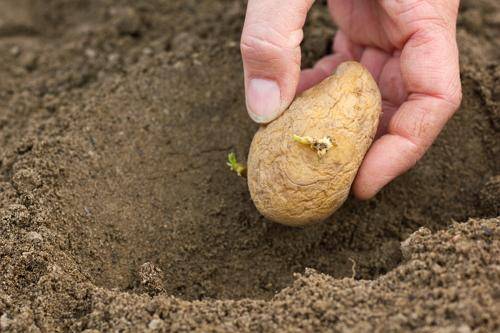
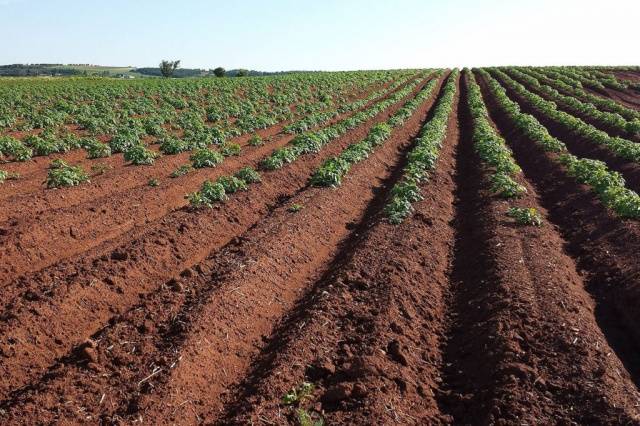
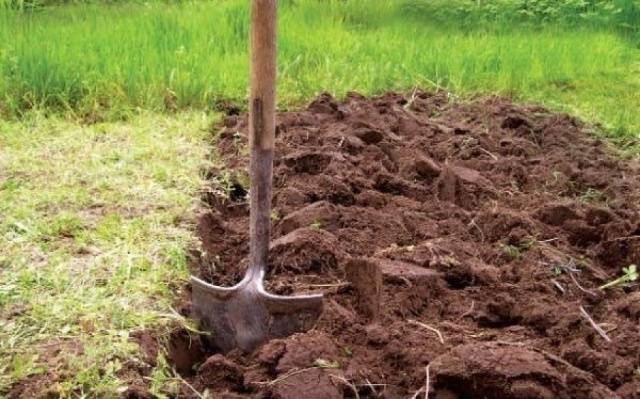
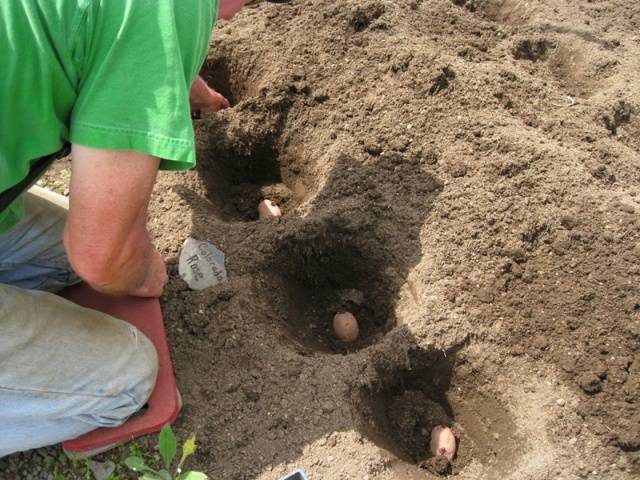
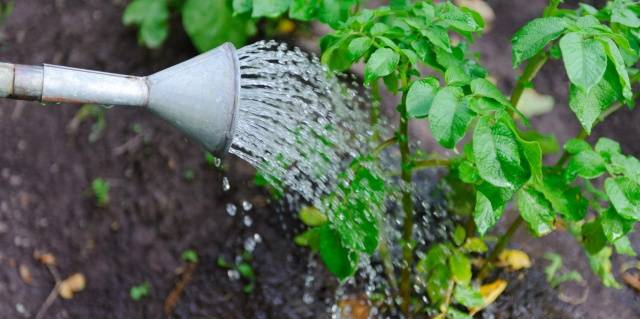
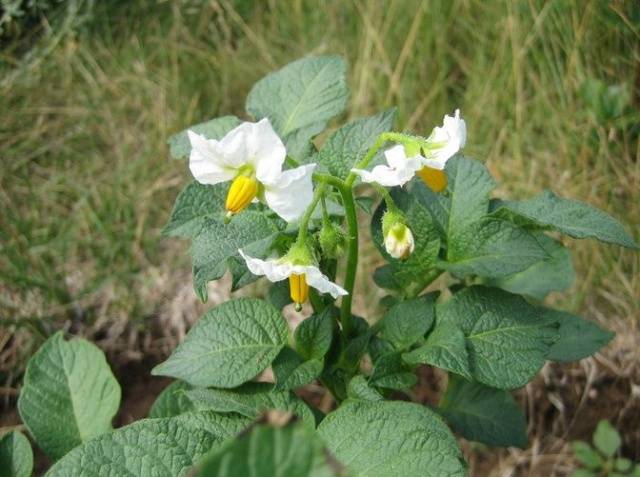
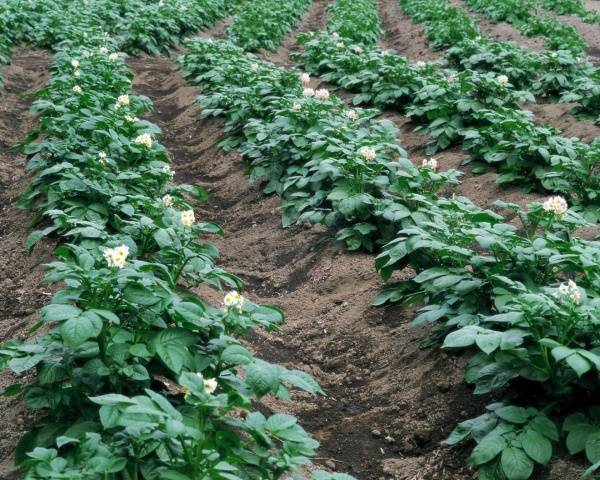
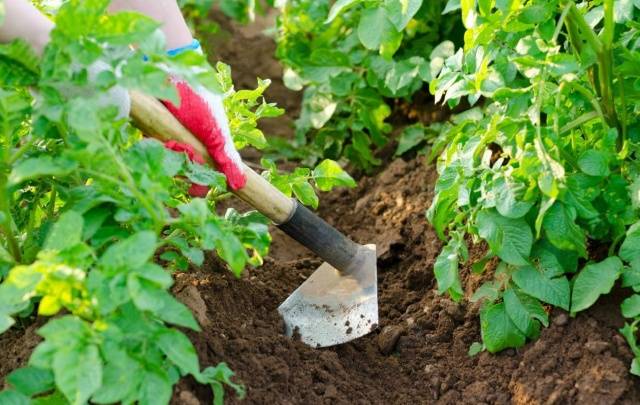
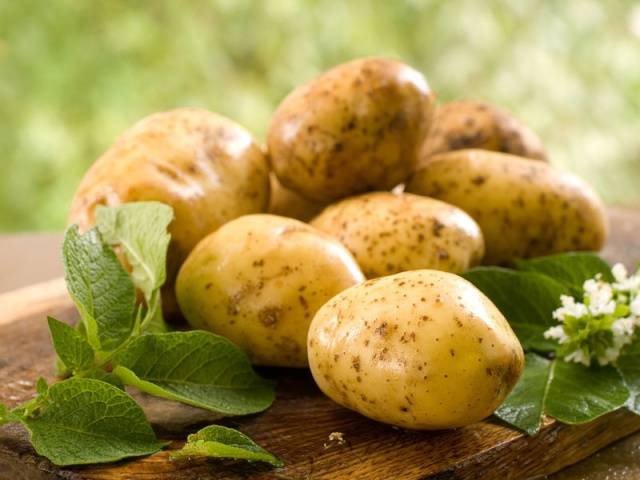
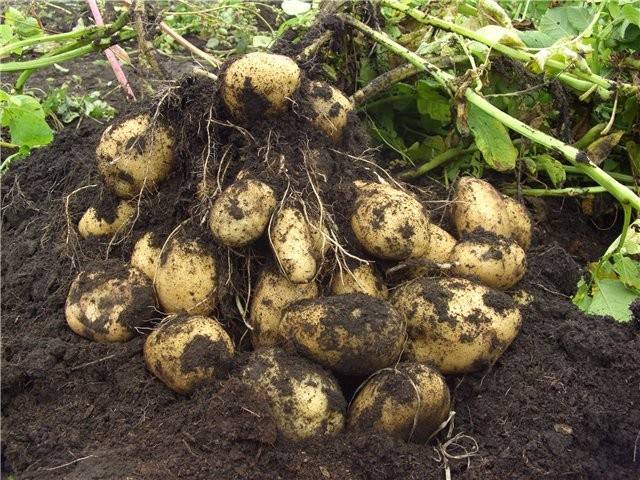
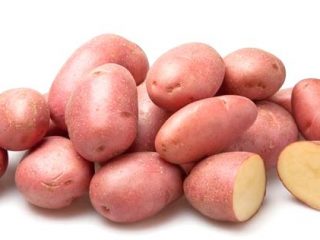



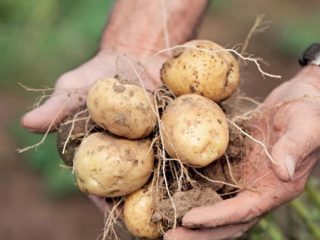

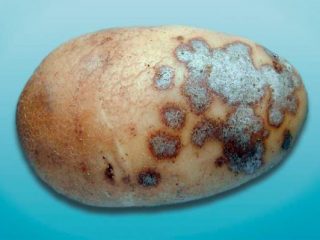
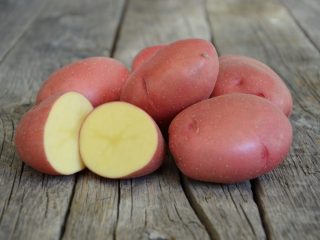
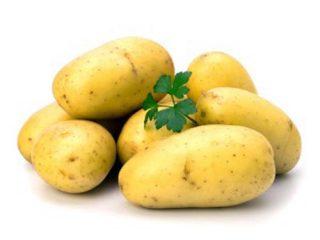
Resistance of potato variety Koroleva Anna to rottenness
We bought Anna Koroleva seeds in mid-February. We prepared them for landing. She was imprisoned on February 29th. When we got acquainted with the characteristics of this variety, we learned that it is intended for central Russia and the variety is mid-season. We ourselves are located in the south of Russia. I would like to get an answer from you to the question: what kind of harvest can we expect at this time of sowing if we take proper care of it?
Good afternoon
Judging by the description and characteristics of the variety presented by the originators, Queen Anna potatoes have a fairly short growing season - only 80-90 days. This means that you will be able to harvest your first crop of young potatoes already in early to mid-June. Despite the fact that the variety has excellent shelf life, we do not advise you to store potatoes dug up so early.
However, you can grow a second crop of potatoes, which will already be well stored. The second potato harvest in the southern regions occurs in September-October. More precise dates depend on the timing of planting and the ripening period of the variety.
You can plant either last year's seed potatoes or newly dug ones. In this case, it is important to properly prepare the seed material and site for planting. It is also worth paying special attention to the timing and rules of watering.